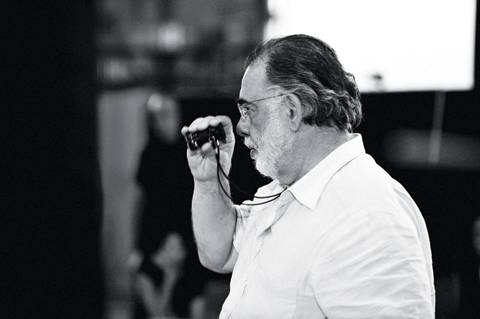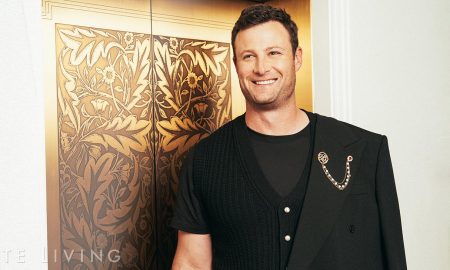
Photography by Bob Martus
During the Civil War, the Union, in order to encourage and entice slaves to fight with them against the Confederacy, said, ‘if you help us defeat the South, in appreciation for being enslaved, each free slave will get 40 acres and a mule as reparation.’ And very few slaves ever got their 40 acres and a mule,” says Spike Lee, who named production company 40 Acres & A Mule Filmworks as a type of homage. Through the omnipotent power of film, Lee has captivated audiences with resounding messages of our social history and often-controversial yet unforgettable stories. Always armed with multiple cameras rolling at the same time, Lee has introduced the world to some of the finest African American actors—the likes of Denzel Washington, Samuel L. Jackson, and Wesley Snipes, all of whom have become household names. He encouraged us to “Do the Right Thing,” took us inside the life of a man named Malcolm Little, and gave us “Jungle Fever.”
Shelton Jackson Lee was born in Atlanta to a jazz-musician father and a mother who taught arts and literature. As a child, he moved to Brooklyn where he spent his youth before to returning to Atlanta for his undergraduate studies. “I went to Morehouse College in Atlanta. My grandmother lived three blocks from the school,” Lee fondly recalls. After three years pursuing a degree in Mass Communications, he decided to venture into filmmaking and, upon graduation from Morehouse, enrolled in NYU’s Tisch School of the Arts. “It was good to be back home in the best film school in the world in my hometown,” he says. Lee’s graduate thesis film, Joe’s Bed-Stuy Barbershop: We Cut Heads, received immediate recognition, and it was clear that this young director was on his way to do great things. When She’s Gotta Have It, Lee’s first feature film, was released in 1986, it grossed $7 million—perhaps a small number in this age of billion-dollar box office earnings, but an astronomical gain for a motion picture that was filmed in two weeks on a budget of $175,000. A string of controversial films such as Do the Right Thing, Malcolm X, and Jungle Fever followed in the subsequent decades and positioned Lee as a filmmaker who was not afraid to tackle sensitive issues such as urban crime, poverty, social injustice, and racism.
I think that students really treasure being taught by working professionals who are still active in the industry.”
Lee still feels as strongly about racism as he did then, and although the nation now has its first African-American president, he strongly believes the paradigm shift has only just begun. “[The election of President Obama] is a big leap but there’s still so much work to be done. There was a case the other day where an African American football player was trying to get to the hospital with his wife before his wife’s mother died and a cop pulled him over,” he says, alluding to the recent news story of Texans’ running back Ryan Moats. “Racism is not dead. Prejudice is not dead. We should continue to fight the good fight and be vigilant in trying to rid ourselves of this evil.” In 2006, Lee caused a stir when he released When the Levees Broke: A Requiem in Four Acts, an HBO documentary about how victims of Hurricane Katrina were neglected and underserved by rescuers. He proceeded to partake in several discussions and articles in which he unashamedly voiced his horror over the matter of Katrina. Despite disagreement and criticism from the media, Lee stood by his film’s message. It is this outspoken nature that will surely count Lee among the greatest pioneers of African-American rights.
Lee has already garnered tremendous recognition, receiving several Academy Award nominations (though he stands firmly by the assertion that he doesn’t care about the Academy Awards), an Emmy award, and is the most recent recipient of the prestigious Wexner Prize, which has gone to a host of exemplary artists such as Martin Scorsese, Robert Rauschenberg, and Yvonne Rainer. But ask Lee and he will immediately answer that the most rewarding gift is that which he has bestowed upon film students at NYU for the past 12 years. “I’ve always wanted to support [my students] because people helped me,” he asserts. “I think that any time someone can teach at their alma mater, that’s a great situation. I know what it means to be a struggling NYU film student. I know what it means to have a dream and to be uncertain if your dream is ever going to take place. I think that students really treasure being taught by working professionals who are still active in the industry.”
As the industry continues to evolve, there are certain technological trends that worry Lee, particularly the onset of smart phone-friendly video content. “I know there are people who would be content to watch a movie on a screen as large as my cell phone,” he says. “As an artist, I really hate that. We work too hard on the cinematography, the production design, the costume design and everything else that it takes to make a film, for it then to be mashed down into a 3-inch by 5-inch screen. Could you imagine seeing Star Wars, The Godfather, or Apocalypse Now on a screen like that? I can’t do it!” So how does Lee like to see films, particularly his own? “We usually have our premieres at the Ziegfeld, which is the best theater in New York, with the best projection, the biggest screen [the size of an iMAX], and the best sound. For me it’s always a joyful event.” He also admits to having snuck into a few of his films with friends to gauge audience reaction.
Lee will be gauging audience reactions during the 2009 Tribeca Film Festival, where he will be premiering two films. The first, entitled Kobe Doin’ Work, follows L.A. Lakers superstar Kobe Bryant on game day, with access to pre-game meetings, adrenaline-pumping game-time action, and the ride back home with Bryant’s wife and kids. The film has special meaning because Lee has always been an ardent sports fan. “My father imparted to me the love of sports and I passed it down to my son. It’s not scripted like movies. You never know what’s going to happen. It’s exciting.” The second entry, Passing Strange, captures the stage excitement of the acclaimed Broadway musical on the eternal medium of film. Passing Strange is particularly important to Lee who has always wanted to make a musical film. “I’d love to do [a musical] one day. I got reinvigorated by going to the opening of West Side Story the other night. I loved the bicultural aspect of some of the Spanish dialogue and lyrics.” This year will mark Lee’s first year of involvement with the Tribeca Film Festival. “I think that Jane Rosenthal and Robert De Niro have been true champions of film and I consider them as a real cornerstone of the New York film-making community. I think they’ve done a great job and I’m happy that this year I have two films in the festival.”
Spike Lee has an unrelenting passion for his craft, a strong voice that, even in the face of controversy, is unwavering, and a warm, no-nonsense attitude (surely the sign of an Atlanta-Brooklyn native). One can be sure that the next scenes in the greatest Spike Lee Joint—the story of his own life and career—will be just as powerful and captivating as the ones that have already played out before us.























